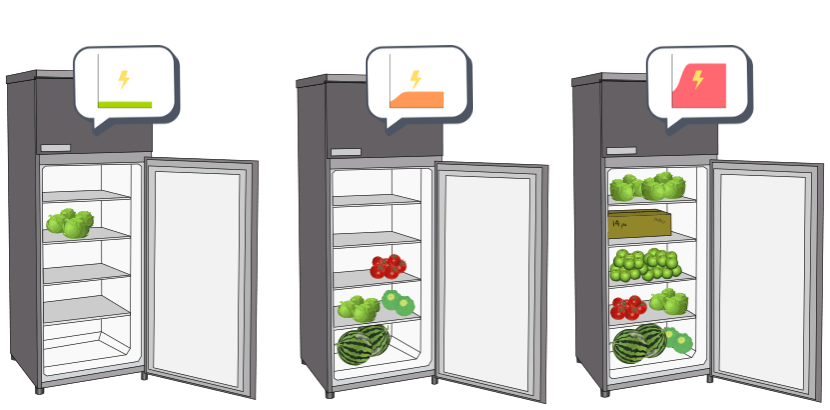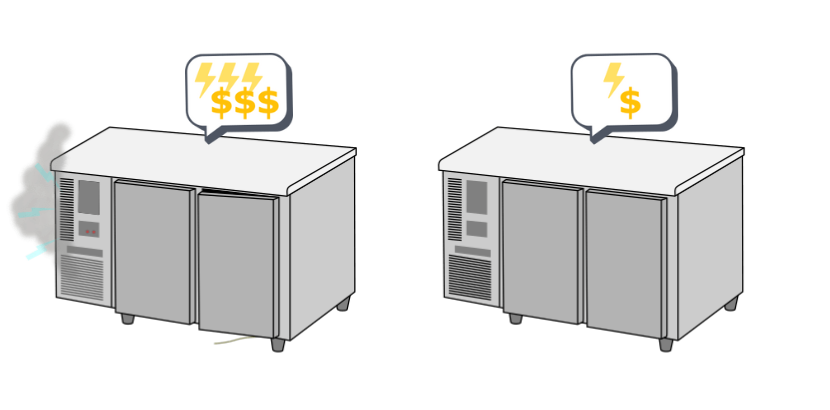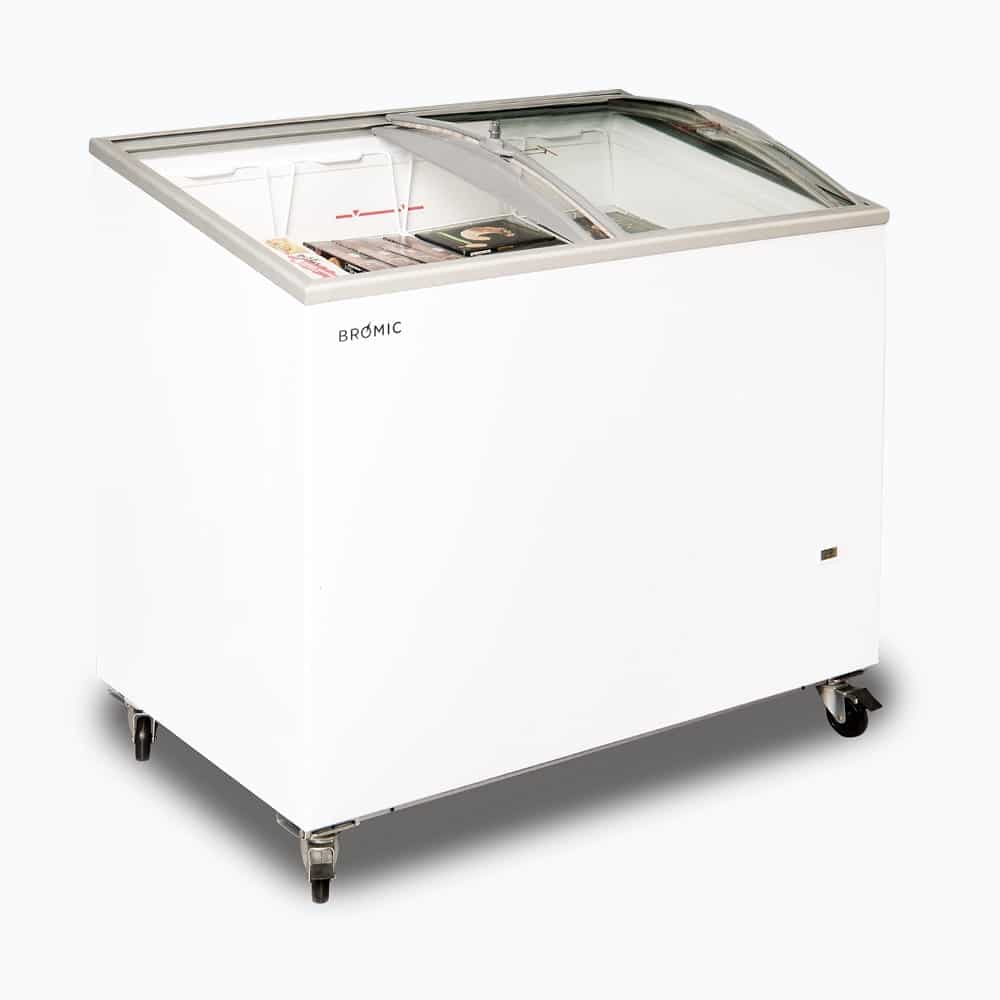An energy efficient commercial fridge is better than a cheap commercial refrigerator. There are two main reasons for this. The first is the cost savings that are involved with lower energy consumption. The other is the smaller impact on the environment and our world at large. A more eco-friendly fridge is designed to minimise energy consumption, and, as such, it minimised unnecessary wastage.
Variable Speed Drive
Put simply, a variable speed drive (VSD) makes sure that the energy used in the commercial refrigeration system is matched to the refrigerator’s load. Rather than running at full capacity all the time, a system with a VSD will only use the required energy, greatly reducing running costs and boosting efficiency. This applies to stainless steel refrigeration, glass display refrigerators, storefront fridges, and more.

If the refrigeration system is running at or close to full capacity for most of the time then a VSD will not improve energy efficiency. However, for a system that runs at least 2000 hours per year and has variable load requirements, a VSD is the preferred option in terms of energy efficiency1.
Maintenance & Replacement
Keeping a piece of machinery in good repair is a sure-fire way to reduce any unnecessary running costs, especially for a restaurant, café, or any other commercial kitchen fitout. A machine that has to do more work because of a build-up of contaminants, or running without an appropriate amount of fluid, or because the condenser wasn’t cleaned will run at a higher energy usage than a well maintained counterpart. Making sure your refrigerator is in good working order will extend the lifetime, lower the running cost, and will guard against any unforseen breakdowns or future issues.

However, even a well maintained machine will slowly succumb to the day-to-day effect of continual usage. A refrigeration system that is older than 10-years is typically inefficient, and replacing the system may increase efficiency by up to 30-40%2. Regular monitoring and testing will help avoid letting the efficiency sink this low as well as help identify future problems.
| Method | Potential Energy Savings |
|---|---|
| Use of electronic expansion valves | 20% |
| VSD on motors | 20% |
| VSD on evaporator and condenser fans | 2–3% of total refrigeration costs |
| Evaporator pressure regulators | 2.5% greater compressor capacity for each degree of saturated suction temperature |
| Evaporator pressure regulators | 2% for each degree increase in saturated suction temperature |
| Reduced temperature lift | 3–4% improvement for 1°C reduction |
| Conversion from liquid injection oil cooling to external oil coolers | Over 3% |
| Refrigeration system replacement if older than 10 years | Up to 30–40% |
| Refrigerant selection | 3–10% |
Savings are not necessarily cumulative. Information sourced from Sustainability Victoria5.
Optimisation Tips
- Inspect your coolant pipe insulation for moisture; a formation of ice can damage the insulation and reduce efficiency of the system.
- Check you’re using the most appropriate coolant for your specific commercial kitchen fitout.
- Look for any spots in your system that may be affected by the environment. Outside sources of heat means more work for the commercial refrigerator system.
- Use the exhausted heat from the system for pre-heating water pipes and other uses. Rather than wasting the unwanted heat from the refrigeration system, it can be repurposed to improve the whole kitchen efficiency.
- Check your seals are intact and aren’t leaking in any heat from outside of the refrigerator.
- Make sure the unit hasn’t been knocked around and has been bumped out of level. Keeping the fridge properly upright makes sure all the seals are properly aligned and working correctly.
- Assure that your fridge unit has appropriate room for external ventilation. A building up of heat will reduce the fridge’s effectiveness.
- Clean your condenser weekly!


 Bench
Bench
 Cabinets
Cabinets
 Shelving
Shelving
 Canopies
Canopies
 Bar Fridge
Bar Fridge
 FRIDGE
FRIDGE
 Undercounter Fridge
Undercounter Fridge
 Upright Fridge
Upright Fridge
 Ice Machine
Ice Machine
 Deli Display Fridge
Deli Display Fridge
 Wine Fridge
Wine Fridge
 Salad Bar Fridge
Salad Bar Fridge
 Pizza Prep Fridge
Pizza Prep Fridge
 Custom Cool Room
Custom Cool Room
 Custom Display Refrigeration
Custom Display Refrigeration
 Custom Salad Prep Fridge
Custom Salad Prep Fridge
 Custom Upright Fridge
Custom Upright Fridge
 Custom Meat Cabinet and Butcher fridge
Custom Meat Cabinet and Butcher fridge
 FREEZER
FREEZER
 Under Bench Freezer
Under Bench Freezer
 Display Freezer
Display Freezer
 Blast Chiller
Blast Chiller
 Upright Freezer
Upright Freezer
 Chest Freezer
Chest Freezer
 Custom Freezer Room
Custom Freezer Room
 Custom Display Freezer
Custom Display Freezer
 Custom Upright Freezer
Custom Upright Freezer
 Cooking Equipment
Cooking Equipment
 Cooktop
Cooktop
 Deep Fryer
Deep Fryer
 Griddle
Griddle
 Pasta Cooker
Pasta Cooker
 Combi Oven
Combi Oven
 Chargrill
Chargrill
 Stock Pot Burner
Stock Pot Burner
 BBQ
BBQ
 Convection Oven
Convection Oven
 Deck Oven
Deck Oven
 Warewashing
Warewashing
 Passthrough Dishwasher
Passthrough Dishwasher
 Underbench Dishwasher
Underbench Dishwasher
 Conveyor Dishwasher
Conveyor Dishwasher
 Glasswasher
Glasswasher
 Dishwasher Rack
Dishwasher Rack
 Dishwasher Accessory
Dishwasher Accessory
 Benchtop Equipments
Benchtop Equipments
 Microwave
Microwave
 Fryer
Fryer
 Warmer
Warmer
 Cooker
Cooker
 Grill
Grill
 Griddle
Griddle
 Toaster
Toaster
 Peeler
Peeler
 Slicer
Slicer
 Filler
Filler
 Grinder
Grinder
 Vacuum Sealer
Vacuum Sealer
 Holding Cabinet
Holding Cabinet
 Warming Cart
Warming Cart
 Prep Machine
Prep Machine
 Food Processor
Food Processor
 Food Dehydrator
Food Dehydrator
 Custom Hot Display Bar
Custom Hot Display Bar
 Restaurants
Restaurants
 Cafes
Cafes
 Bars and Nightclubs
Bars and Nightclubs
 Hotels
Hotels
 Bakeries
Bakeries
 Juice Bars
Juice Bars
 Supermarkets
Supermarkets
 Butchers
Butchers
 Food Truck
Food Truck
 Medical
Medical
 School and centers
School and centers
 Age-Care
Age-Care
 Commercial Builders
Commercial Builders
 Franchies
Franchies
 Pizza Shops
Pizza Shops
 Dessert Shops
Dessert Shops



